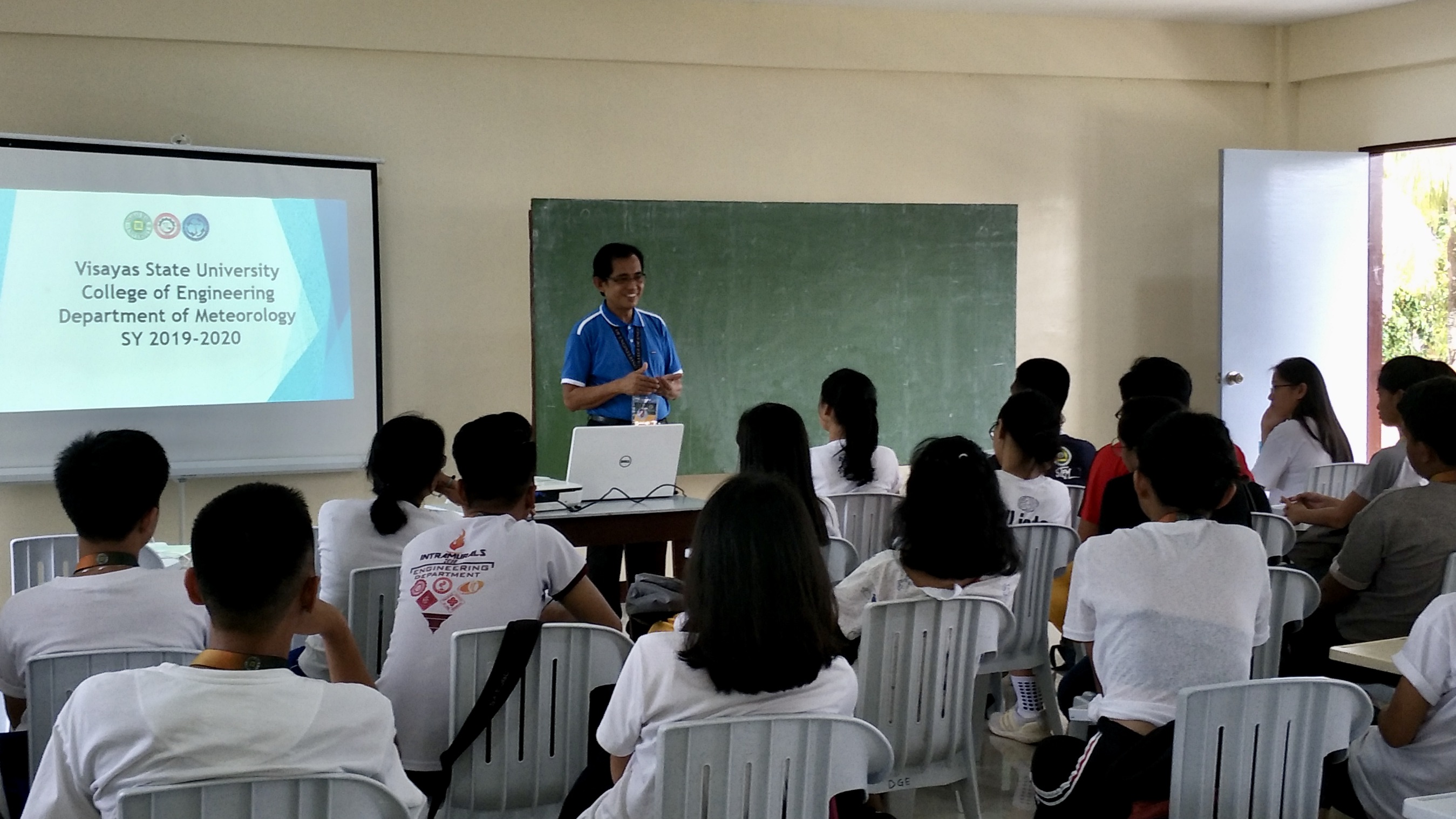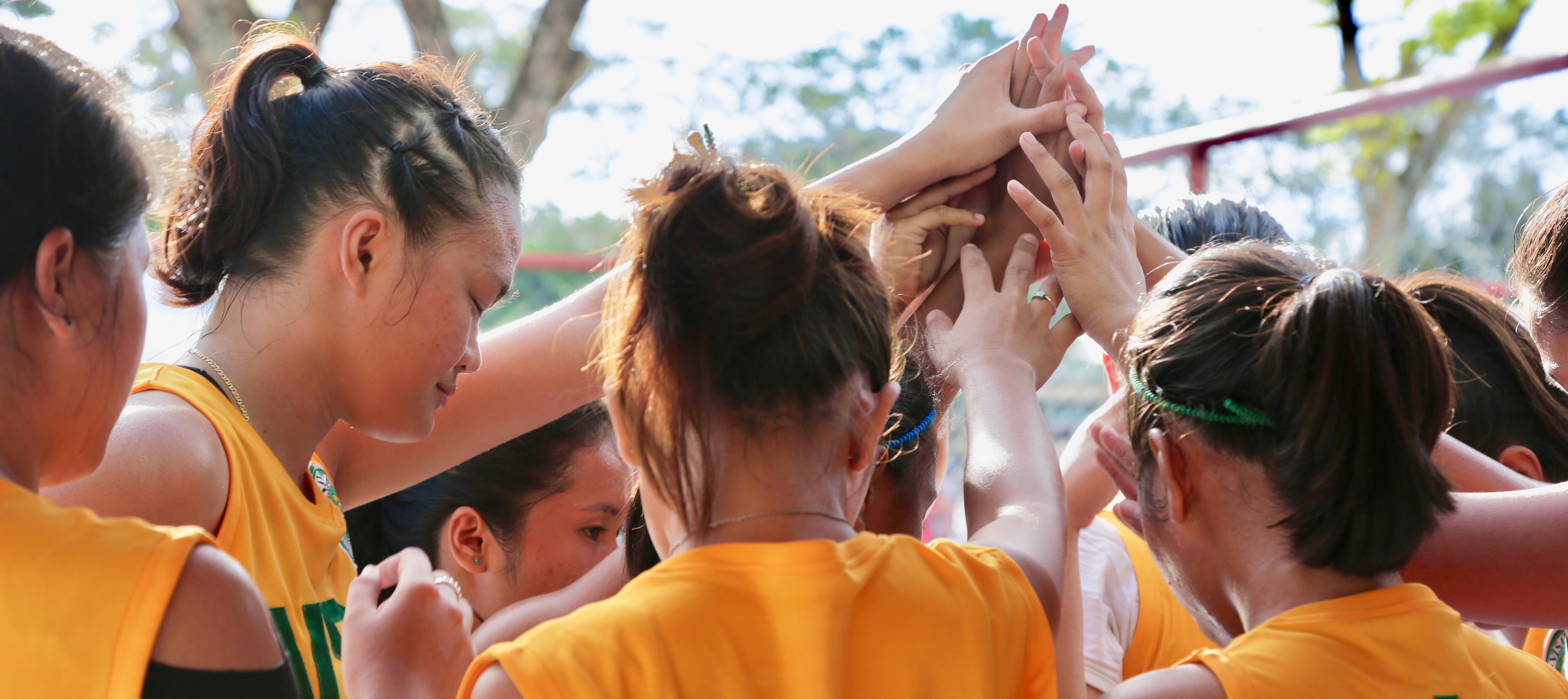Content (main)
- Details
-
Published: 24 June 2020
Meteorology as a field
Meteorology is the science of the atmosphere. It offers the opportunity of investigating the forces that shape weather and climate and how human activities can affect climate through the introduction of pollutants in the atmosphere (http:/www.cmos.ca).
Moreover, Meteorology is a branch of atmospheric science that deals with the study of weather processes and forecasting. It is an interdisciplinary science, drawing on basic knowledge, theory, and laws from a variety of scientific fields including physics, math, and chemistry, which aid in developing a strong understanding of the physical and dynamical processes affecting atmospheric motions/behavior. This is a vast and complex field of study that also involves land-ocean-atmosphere interactions.
Meteorology in Visayas State University
The Consortium on Meteorology Education and Training (CoMET) is an initiative that participated by DOST-PAGASA, AGHAM Party-list, CHED, and four Higher Education Institutes (HEIs), including the Visayas State University (VSU), in offering the Bachelor of Science Meteorology program. VSU is the only HEI offering the program catering students from the Visayas and Mindanao region. The challenges of the changing atmosphere and the dearth of expertise in atmospheric science and meteorology demand for capacity building in this specialized field of study.
VSU, through the Department of Meteorology under the College of Engineering and Technology, envisions that the exigency of professionals in the country who understand how the atmosphere behaves will significantly grow in years.
Current advances in this field include big data analytics, high-resolution numerical modeling, and ensemble nowcasting and long-range forecasting.
The undergraduate degree program in Meteorology is a balance between a holistic general education program and a substantial BS Meteorology curriculum. The program shall provide the students with comprehensive and rigorous training in math and physics as a foundation for careers in meteorology and atmospheric science and the full understanding of the importance of the meteorological study to humans.
Program Educational Objectives
The following are the Program Educational Objectives of the VSU’s BSMet degree program:
1. Articulate in multimedia weather broadcasting.
2. Instill leadership and management in disaster risk reduction.
3. Manage a business with weather-sensitive operations (e.g. aviation, marine, navigation, power, oil exploration) and military.
4. Pursue advance studies in Meteorology and emerging related fields; and
5. Conduct relevant research and innovative studies geared towards the advancement of meteorology as a scientific field.
6. Occupy responsible positions in meteorology education; and other PEOs unique to the institution
- Details
- Written by Visayas State University
-
Published: 28 February 2020
We take environmental conservation seriously.
The vision of Visayas State University is to be a globally competitive university of science, technology, and environmental conservation. VSU started as a small agricultural school before taking off to be an internationally renowned university for agriculture and allied fields. We understand deeply the need to care for the environment because of our thrusts in sustainable agriculture.
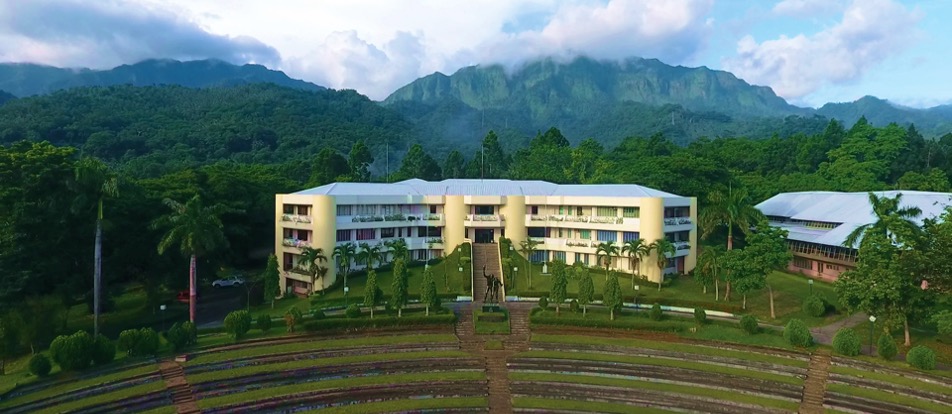
Minimizing and Recycling Waste
At VSU, we have implemented policies that guide our constituents in managing waste more responsibly:
- Waste segregation and disposal. We segregate waste at the office level, which is then collected by our garbage trucks for proper disposal. Our Landscape and Waste Management Unit assists in planning, implementation, and monitoring of all repair and maintenance activities including landscape, cleanliness of roads and grounds, and garbage collection. Our Sanitation and Waste Management Committee (SWMC) plans and helps implement proper waste management and disposal in the campus.
- No to single-use plastics. We have banned the use of single-use plastics, especially at our university market. Staff and students bring their own bags and containers when buying items from the market.
References: OP Memorandum Circulars No. 21 S. 2000, No. 3 S. 2006, No. 28 S. 2006, No. 89 S. 2012, No. 93, S. 2018
Conserving Energy
We are moving towards cleaner energy, just as we also make efforts to conserve electricity.
- Imposing energy conservation measures, like turning off the lights and airconditioning units when not needed.
- Building design. Most of our buildings are designed to conserve energy, with spaces at the center to allow for better airflow in and out of windows and doors.
References: OP Memorandum Circular No. 51, S 2017, F.A. Bernardo, E.N. Bernardo "ViSCA: History and Analysis of Institution Building" (1985)
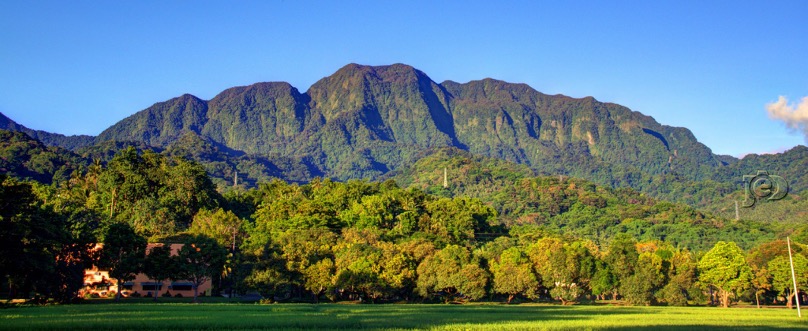
Saving Water
VSU has its own water source, coming from the abundant supply from Mt. Pangasugan and the Leyte cordilleras. It is also said that VSU's water is one of the sweetest waters in the country. Still, residents are encouraged to conserve water.
- Careful monitoring of water facilities to prevent and address leakages.
- A minimal fee of $1 per household for maintenance and operating expenses
- Fishponds and other man-made structures using VSU water are strongly discouraged
Going Around Green
The experience of going around the university campus is distinct.
- We are a "dark green school". The Environmental Education Network of the Philippines, Inc. dubbed VSU as a Dark Green School to "recognize and affirm the efforts of educational institutions from the college, high school and elementary levels with the most comprehensive environmental programs and activities."
- When the campus was built, it was originally designed to be a pedestrian campus. The intent was to minimize gas and noise pollution from cars.
- Tuyok. In Cebuano, "tuyok" means to "go around", an apt name for VSU's biodiesel vehicles used to transport people around the campus. Launched in 2018, four vehicles of VSU's Transport Loop System ply the campus every day to ferry passengers around VSU's large university campus. VSU charges a minimal fee similar to multicabs.
- Carpooling. When traveling outside the campus, VSU merges official trips of its staff to save fuel.
References: BOR Resolution No. 20, s. 2018, OP Memorandum Circular No. 48 S 2018, F.A. Bernardo, E.N. Bernardo "ViSCA: History and Analysis of Institution Building" (1985)
- Details
- Written by Visayas State University
-
Published: 17 February 2020
Starting last academic year, Visayas State University (VSU) introduced a one-stop shop enrollment system to make admission and enrollment more efficient and convenient for incoming Viscans. This setup was designed to reduce long queues, minimize confusion, and allow students to complete all necessary steps in one place.
This process brings together various enrollment services into a single venue. By doing so, VSU makes it easier for new students to settle everything without having to move from office to office.
For the incoming #ProudViscans of the Main Campus, enrollment will be held from June 23 to July 4, 2025 at the Center for Continuing Education (CCE) Building in the VSU Lower Campus.
To help you prepare, here is a step-by-step guide:
Step 1: Set an Online Appointment.
Before going to the enrollment site, students need to book an online appointment. This helps manage the number of students per day and keeps the process more organized. Only 250 slots are available per day. The appointment portal will open on June 16, 2025 (Monday) at 8:00 AM.
You can book your appointment here: https://cat2025.vsu.edu.ph/appointment. Below is your guide to set an appointment:
Step 2: Intake Session with a Guidance Counselor
Once on-site, students will attend a brief intake session (around 5–7 minutes) with a Guidance Counselor. This is a short orientation to introduce you to the services available for student support.
Additionally, students are required to bring one long white folder during your session.
Step 3: Submit Admission Requirements
Submit all original documents to the Admissions Office. Incomplete submissions will not be accepted. However, if the original PSA/NSO Birth Certificate is not yet available, it may be conditionally accepted if accompanied by a duly signed promissory note. You may check the list of required documents here: https://www.vsu.edu.ph/admission/college/enrollment-process
Applying for Dormitory Accommodation? If yes, you must pay 50% of the total dormitory fee for five months, depending on the rate of your selected dormitory or cottage.
Step 4: Pay Fees at the Cashier
Settle the following payments at the cashier:
Dormitory Application Fee (for dorm applicants)
ID Lanyard: Php 55.00
Step 5: Proceed to the Registrar’s Office
In this step, students will need to:
- Confirm the accuracy of personal profile and information.
- Have subjects encoded by the Registrar's staff.
- Receive an electronic copy of the Certificate of Registration (COR).
- Proceed to ID printing after the COR is issued.
Step 6: Photo ID
After receiving your COR, head to the ID station for photo capturing and printing. Ensure that you are in proper attire and presentable, as this ID will serve as your official student identification throughout your stay at the university.
Alternatively, you may prepare an e-copy of your ID photo with a white background, preferably in formal attire, to facilitate faster processing of their ID card.
Step 7: USSC Membership
All officially enrolled students are required to register for the University Supreme Student Council (USSC) – Baybay. As mandated by Article 5, Section 4 of the USSC Constitution and By-Laws, all officially enrolled students are required to become members of the University Supreme Student Council (USSC) - Baybay and pay Php 50.00 per semester, totaling Php 100.00 per academic year.
Students are also advised to bring your mobile phones to facilitate the online registration process for USSC membership.
Step 8: Submit Customer Feedback
After completing the enrollment process, students are encouraged to provide feedback on their experience. This helps improve the quality of services offered.
We’re looking forward to welcoming you to the very scenic university! Please come prepared, follow the instructions carefully, and do not forget to check the official VSU Facebook page and website for any updates or announcements.
We hope your enrollment goes smoothly and see you soon, future #ProudViscans!
- Details
- Written by Visayas State University
-
Published: 24 February 2020
Accredited Student Organizations
|
||
COURSE-RELATED |
ADVISER/S |
PRESIDENT |
|
ABELSS (English Language Students Society |
Dr. Jett C. Quebec |
Bernadeth P. Pepito |
|
Dr. Cherry N. Rola |
||
|
AMA (Agronomy Majors Association) |
Dr. Luz G. Asia |
Ivy D. Dagumay |
|
Ms. Gweneth M. Abit |
||
|
APBM (Association of Plant Breeding Majors) |
Ms. Jedi Joy B. Mahilum |
Carlo B. Bestorillo |
|
Ms. Julien R. Deroy |
||
|
BPEd SS (Bachelor of Physical Educa Student Society) |
Ms. Florife A. Gatchalian |
Christopher M. Gonzales |
|
Mr. Lyndon L. Maningo |
||
|
ChemSoc (Chemical Society) |
Dr. Elizabeth S. Quevedo |
Jotham Lloyd Alegre |
|
Mr. Kevin Nick S. Bandibas |
||
|
CSSS (Computer Science Students Society) |
Mr. Eugene Val Mangaoang |
Christian A. Bandibas |
|
Mr. Jomari Joseph A. Barrera |
||
|
DeCSo (Development Communicators' Society) |
Ms. Mae Claudine M. Gica |
Margraf Von Sean G. Eslopor |
|
Mr. Jed Asaph D. Cortes |
||
|
FSS (Forestry Student Society) |
Dr. Renelita Come |
Romeo T. Dequito, Jr. |
|
Prof. Anatolio N. Polinar |
||
|
GEP (Geodetic Engineers of the Phil-VSU Chapter) |
Engr Diana Christa G. Milloza |
Mark Gil D. Cabangal |
|
Engr. Rex R. Doñoz |
||
|
HOMES (Helpers In Outreaching Mother Earth's Stability |
Dr. Marlito Jose M. Bande |
Marrian Mae N. Pepito |
|
Interact Society |
Marilyn N. Manaig |
Joshua B. Casinillo |
|
Jay C. Bansale |
||
|
JPSME (Junior Philippine Society of Mechanical Engineers) |
Engr. Philip Caesar Ebit |
JB Lord B. Amith |
|
Engr. Vic Angelo Impas |
||
|
KaFiM (Kapisanan ng mga Filipino Majors) |
Dr. Rizalina D. Truya |
May D. Apepe |
|
Ms. Marievic S. Flores |
||
|
LExES (League of Exemplary English Students) |
Ms. Marilyn N. Manaig |
Nikita Aisle M. Rosal |
|
Ms. Louisa Marie B. Andrade |
||
|
LeSciM (League of Science Majors) |
Dr. Lijueraj J. Cuadra |
Ella Marie G. Nuñez |
|
Dr. Christy M. Desades |
||
|
MMS (Math Majors Society |
Dr. Eusebio R. Lina, Jr. |
Jenalyn D. Ambi |
|
Dr. Ma. Rachel Kim Aure |
||
|
Mentors' Guild |
Ms. Louisa Marie B. Andrade |
Kyla Mae Batestil |
|
Ms. Crisyl S. Compendio |
||
|
OBioS (Organization of Biology Students) |
Ms. Fretzeljane D. Pogado |
Karen C. Nava |
|
Mr. Kenneth O. Eco |
||
|
OSSM (Organization of Soil Science Majors) |
Mr. Medardo Magdadaro, Jr |
Ezra G. Monte |
|
Mr. Kenneth Oraiz |
||
|
PAFT-KSC (Philippine Association of Food Technologists-Kappa Students Chapter) |
Dr. Lynette C. Cimafranca |
Angela Mea R. Reusora |
|
Engr. Julious B. Cerna |
||
|
PICE-VSU SC (Philippine Institute of Civil Engineers-VSU Student Chapter) |
Engr. Hanzel N. Mejia |
Joseph Napoles |
|
Engr. Jan Joshua M. Pomida |
||
|
PPMA (Plant Protection Majors Association ) |
Dr. Reny G, Gerona |
Judy Ann Jane B. Crave |
|
Dr. Mary Joy M. Abit |
||
|
PSABE-VSUSC (Philippine Society of Agricultural & Biosystems Engineers) |
Engr. Arthur IT Tambong |
Joshua Emmanuel B. Tismo |
|
Engr. Triana D. Soroño |
||
|
Engr. Jessie James D. Layan |
||
|
SABS (Society of Agri-Business Students) |
Mr. Bryan R. Gapasin |
Valentin F. Sabando |
|
Mr Bert Peñalosa |
||
|
Ms. Loregin S. Pugosa |
||
|
SASS (Society of Animal Science Students) |
Ms. Rosa De Lima G. Beato |
Rodel M. Batindaan |
|
Mr. Roger Roque E. Bustamante |
||
|
SHoTS (Society of Hospitality & Tourism Students) |
Ms. Hannah Mae E. Quimbo |
Colleen Kaye Negad |
|
Ms. Syrene P. Nayre |
||
|
TORAH |
Mr. Randy G. Omega |
Cristille M. Madera |
|
Ms. April Gail N. Valencia |
||
|
ViHoS (Visca Horticultural Society) |
Dr. Santos B . Villocino, Jr. |
Jessica S. Majerano |
|
Dr. Catherine C. Arradaza |
||
|
VSU-AgExSo (VSU Agricultural Extension Society) |
Mr. Virgelio C. Dargantes |
Jesie Pepe L. Bartolome |
|
Ms. Rosemarie B. gonzaga |
||
|
VSU-BS (VSU Biotechnological Society) |
Mr. Ronald Arlet P Villaber |
Rey Christian S. Bitor |
|
Ms. Chloris Marie E. Caseres |
||
|
VSU Meteorological Society |
Mr. Charlindo S. Torrion |
Leanne Marie A. Loreto |
|
VSU-SS (VSU Statistical Society) |
Ms. May Ann E. Palen |
Rose Ann N. Bartido |
|
Ms. Donna C. Cuyno |
||
|
YES (Young Economists Society) |
Ms. Maria Hazel I. Billezas |
Neca Jane O. Malacora |
|
Prof. Ernesto F. Bulayog |
||
GREEK-LETTERED ORG |
ADVISER/S |
PRESIDENT |
|
Adamas Nu Omega |
Mr. Dioscoro M. Bolatete, Jr |
Jeric M. Almeroda |
|
Ms. Lisa I. Arce |
||
|
Alpha Phi Omega |
Engr. Marlon Burlas |
Rowena Senerdida |
|
Ms. Lovella Tambis |
||
|
Gamma Epsilon |
Mr. Buen Josef Andrade |
Joni Franz P. Davis |
|
Gamma Sigma Confraternity |
Pamela H. Urdaneta |
John Rey Latras |
|
Sigma Alpha Epsilon |
||
|
Tau Gamma Phi |
Dominic Michael Garrido |
Joselito Aya-ay |
|
Tau Omega Mu Fraternity & the Ladies Circle |
Mr. Marcho P. Bandalan |
Edmond L. Reyes |
|
Ms. Paula Nadrea M. Paquibulan |
||
|
VKV-VLV (Venerable Knights Veterinarian Fraternity-Venerable Ladies Veterinarian Sorority) |
Dr. Santiago T. Peña, Jr. |
Serville O. Abueva |
|
Dr. Carl Leonard M. Pradera |
||
INTEREST GROUPS |
ADVISER/S |
PRESIDENT |
|
Association of Rodeo Enthusiasts (AREV ) |
Dr. Julius V. Abela |
Patt Joshua C. Andrade |
|
Mr. Michael Dominic M. Garrido |
||
|
Banaag Visual Arts Group |
Mr. Mizael B. Cerna |
Cherry Bea V. Jumawan |
|
Mr. Lolito D. Caña |
||
|
Dog Owners' Club (DOC) |
Dr.Melvin A. Bagot |
Kirk Michael C. Caniga |
|
Dr. Kenny Olana |
||
|
DOST-SS (DOST Scholars Society) |
Engr. Rex R. Doñoz |
Mary Michelle A. Tesado |
|
Engr. Diana Christa G. Milloza |
||
|
TARSIER (Terrestrial & Aquatic Restoration by Students Immersed in Environmental Reforms) |
Mr. Charlindo S. Torrion |
Krystel Denise L. Labrador |
|
Engr. Hanzel N. Mejia |
||
|
Ms. Mary Annilyn Villar |
||
|
UISB ( University Inter-Dormitory Student Body) |
Ms. Mae Claudine M. Gica |
Kurt Jose Daniel Ceniza |
|
Mr. Ramil B. Vinculado, Jr. |
||
|
Engr. Hanzel N. Mejia |
||
|
VSU Debate Society |
Dr. Jett C. Quebec |
Ann Melene C. Fernandico |
|
Mr. Beljun P. Enaya |
||
|
VSU Robotics |
Engr. Philip Ceasar Ebit |
Lesley Angel C. Radores |
|
Mr. Michael Anthony Jay B. Regis |
||
|
VSU Ultimate Frisbee Club |
Mr. Edilberto A. Artiga Jr. |
Lloyd V. Cedro |
REGIONAL GROUPS |
ADVISER/S |
PRESIDENT |
|
HI (Hugpong Ilonggo) |
Ms. Angelita L. Paradero |
Geraldine B. Daganasol |
RELIGIOUS GROUP |
ADVISER/S |
PRESIDENT |
|
AC (Ambassadors for Christ) |
Prof. Lorina A. Galvez |
Zev L. Oliveros |
|
Mr. Kenneth Oraiz |
||
|
AMiCUS (Adventist Ministry to College and University Students) |
Engr. Hazel N. Mejia |
Jemboy D. Hermo |
|
Mr. Edralin M. Malasaga |
||
|
CBI (Christian Brotherhood International) |
Mr. Jeremias Vista |
Jawrence Benz Casupang |
|
Dr. Renezita S. Come |
||
|
Ikthus Campus Care |
Prof. Elsie E. Salamat |
Pam P. Escopete |
|
Ms. Geraldine T. Baro |
||
|
LA (Lakas Angkan Undergraduate Ministries) |
Ms. Inish Chris P. Mesias |
Argie D. Dadis |
|
Ms. Shalom Grace Sugano |
||
|
LDSSA (Latter Day Saints Students Association) |
Ms. Ma. Fe L. Gayanilo |
Aldrin G. Basmillo |
|
SPARKS (Students Proclaiming A Righteous King & Savior) |
Ms. Emily L. Casinillo |
Mark Angelo D. Menorias |
|
Mr. Rommel M. Garrido, Jr |
||
|
Students LinC (Student Leaders in Campus) |
Mr. Jaime B. Berundo |
|
|
Students of Destiny |
Dr. Nilda T. Amestoso |
Dixie Grace A. Gelaga |
|
The Builders |
Dr. Santiago T. Peña |
Van Adrian E. Mazo |
|
Ms. Mary Cris F. Pleños |
||
STUDENT COUNCIL |
ADVISER/S |
PRESIDENT |
|
USSC (University Supreme Student Council) |
Dr. Guiraldo C. Fernandez, Jr. |
Chad Christian D. Wales |
|
Prof. Ernesto F. Bulayog |
||
|
Mr. Raymund M. Igcasama |
||
|
CAFS-SSC (College of Agriculture & Food Sciences Supreme Student Council) |
Dr. Julius V. Abela |
Diana Rose R. Lasconia |
|
Mr. Kenneth Oraiz |
||
|
CAS-SSC (College of Arts & Sciences Supreme Student Council) |
Mr. Raymund M. Igcasama |
Jeremiah D. Laude |
|
Ms. Eunice Kenee L. Seriño |
||
|
CoEd-SSC (College of Education Supreme Student Council) |
Ms. Crisyl S. Compendio |
Jodel M. Navera |
|
Mr. Edilberto A. Artiga, Jr. |
||
|
CFES-SSC (College of Forestry & Environmental Sciences Supreme Student Council) |
Dr. Dennis P. Peque |
Aliah A. Bacus |
|
Dr. Angelica P. Baldos |
||
|
CME-SSC (College of Management & Economics Supreme Student Council)) |
Dr. Nilda T. Amestoso |
Aubrey Maekaela G. De Asis |
|
Mr. Randy G. Omega |
||
|
Mr. Karl John A. Galvez |
||
|
CET-SSC (College of Engineering & Technology) Supreme Student Council) |
Engr. Christa G. Milloza |
John Allan A. Gulles |
|
Engr Jessie James D. Layan |
||
|
CN-SSC (College of Nursing Supreme Student Council) |
Ms. Jesusa M. Magno |
Lance M. Morquianos |
|
Mr. France Allan Cavite |
||
|
CVM-SSC College of Veterinary Medicine Supreme Student Council) |
Dr. Agnes M. Taveros |
Tisha Marie L. Cortez |
|
Dr. Jane P. Duatil |
||
- Details
- Written by Visayas State University
-
Published: 14 January 2020
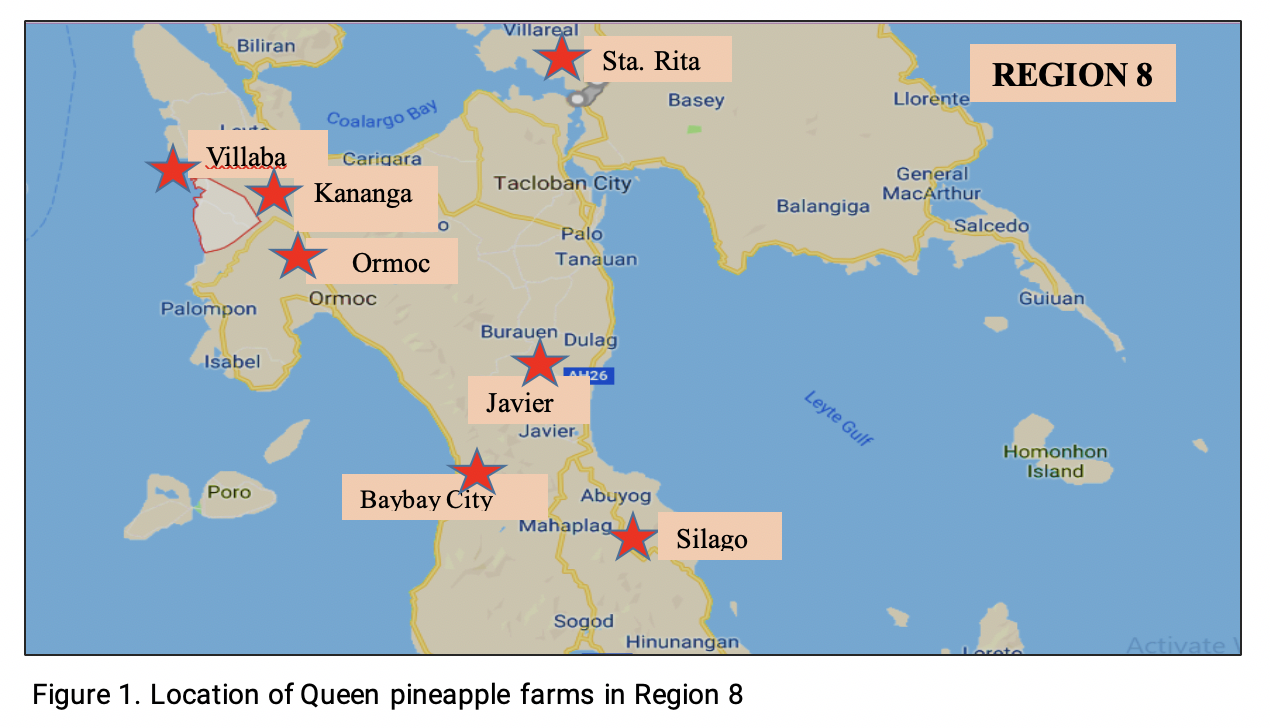 In Region VIII, Queen Pineapple populations including the newly established ones were documented as to size and location. As surveyed, Queen pineapples are grown in Baybay City, Javier, Kananga, Ormoc City and Villaba in Leyte, Sta. Rita in Samar and Silago in Southern Leyte, with a total area of 229.78 hectares.
In Region VIII, Queen Pineapple populations including the newly established ones were documented as to size and location. As surveyed, Queen pineapples are grown in Baybay City, Javier, Kananga, Ormoc City and Villaba in Leyte, Sta. Rita in Samar and Silago in Southern Leyte, with a total area of 229.78 hectares.
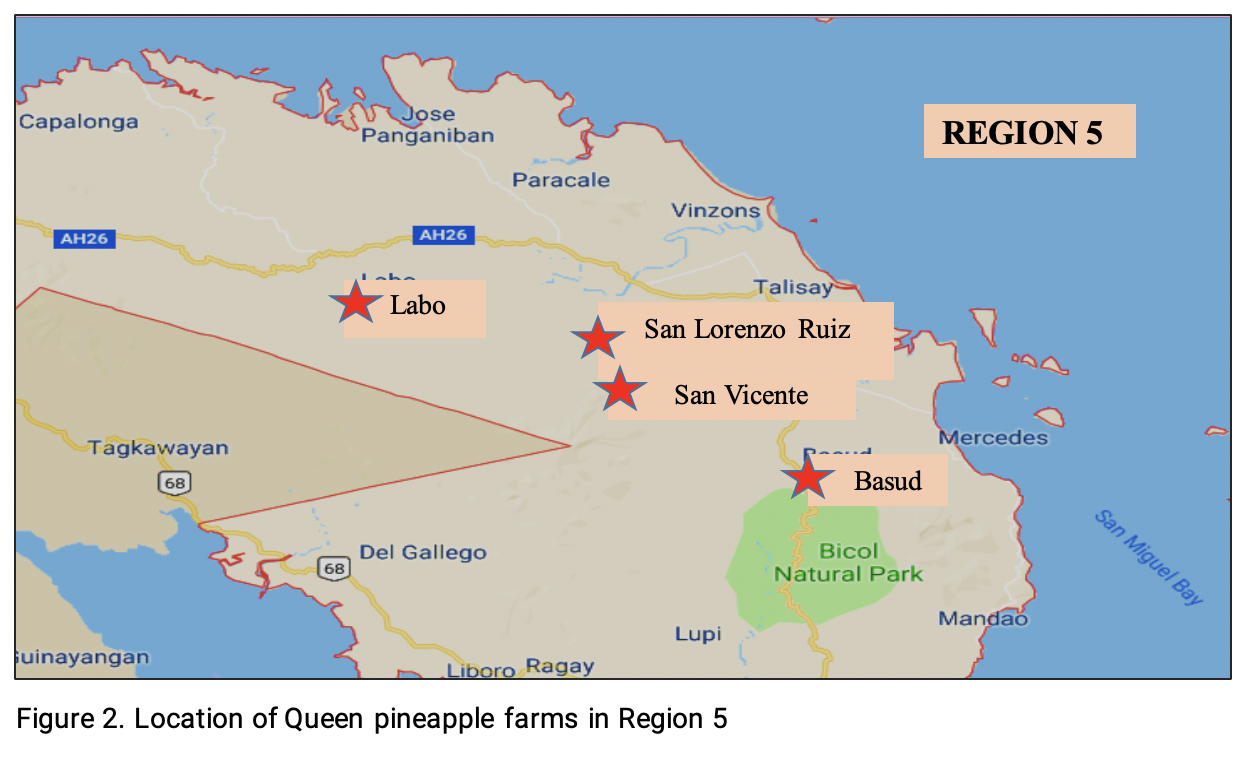
In Luzon, Queen Pineapple is mainly grown in the Provinces of Camarines Norte. A total of 2,525 hectares of the province is planted to pineapple translated to 82% of total pineapple area in Municipality of Basud, Labo, San Lorenzo Ruiz and San Vicente, Camarines Norte.
- Details
- Written by Visayas State University
-
Published: 24 February 2020
Here at VSU, we aim to provide quality service to our students by engaging them in an active learning environment centered on their success. This is one with our goal to produce highly competent, quality and world-class manpower in science and technology, especially in agriculture, environmental management and industry who are proficient in communication skills, critical thinking, and analytical abilities.
Attributes of a VSU Graduate
-
- Competence
- Graduates possess relevant knowledge, skills, and attitudes needed in their chosen fields, and can apply these in the practice of their profession and in giving service to the community.
-
- Resilience and Endurance
- Graduates are flexible, adaptable, and steadfast when facing challenging life situations.
-
- Critical Thinking Skills
- Graduates are reflective and can critically analyze and evaluate facts, observations, and differing opinions to arrive at a sound judgment or conclusion.
-
- Effective Communication Skills
- Graduates can communicate information and ideas effectively and express needs and opinions clearly to varied audiences.
-
- Leadership Skills
- Graduates act professionally, and ethically, and can assume effective leadership roles in their chosen careers and in society.

• College Admission Test
Become a full-pledged Viscan and take the VSUCAT. Check the examination schedule and requirements here.
• Scholarship
Find the right grant that suits your needs.
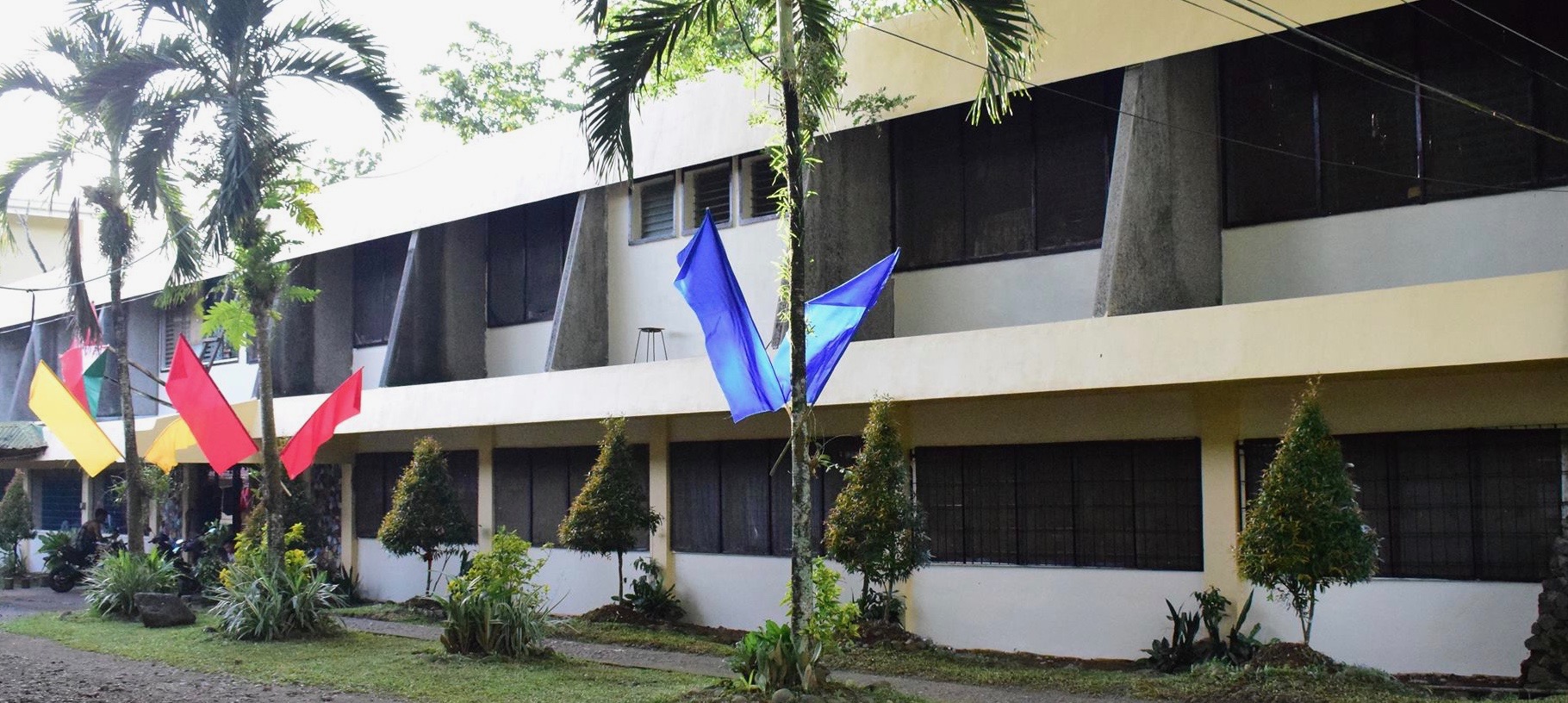
• Student Services Office
The University Student Services Office (USSO) is ready to assist you with our welfare and development services/programs tailored to meet your student needs.
• Student Housing
Choose where to spend your college days while on campus. Stay near Mt. Pangasugan or by the Camotes Sea.
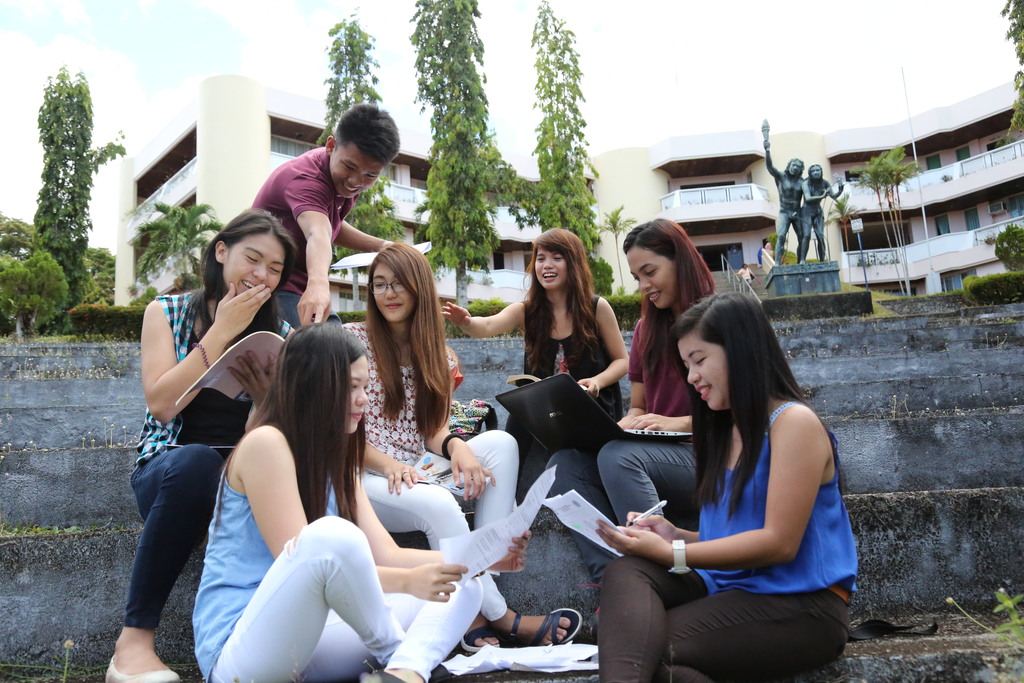
• Supreme Student Council
Know your leaders and college representatives.
• Student Media Organization
The Amaranth is the official student media organization of the Visayas State University. Currently, hailed as the best student publication in Region 8.
• Accredited Organizations
Involve in extra-curricular activities by joining an organization spanning from course-related, religious, greek-lettered, to interest groups.
• Sports, Recreation, and Arts
Join our varsity team (Team Phytons) or participate in our culture and arts activities and bring pride to the university.
• Student Bulletin
Be in the loop with university happenings and updates.
• Events
Mark your calendars. Here's what to expect for the rest of the year.
- Details
- Written by Visayas State University
-
Published: 14 January 2020
1. Use of Potential Antagonists
• Trichoderma sp. (fig.1)
• Penicillum sp. (Isolate1) (fig.2)
• Penicillum sp. (Isolate2) (fig.3)
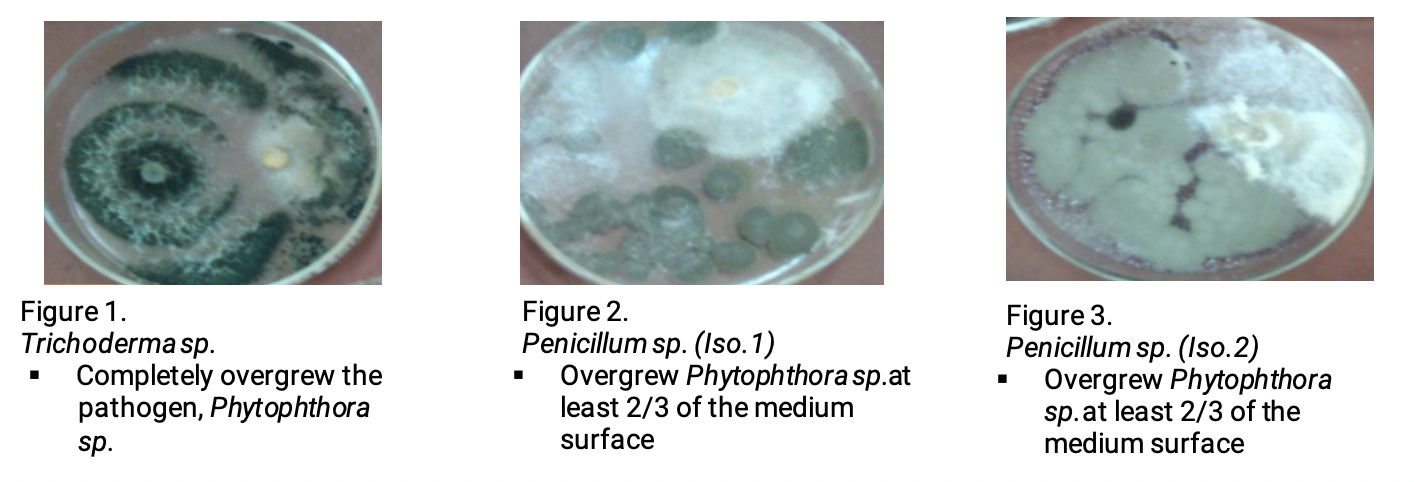
2. Use of Plant Extracts/Plant-Based Solution
Plant extracts that inhibits the germination of spores of Colletotrichum sp. were:
• Mayana, Coleus scutellarioides (fig.4)
• Panyawan, Tinospora rumphii (fig.5)
• Tigbaw, Callicarpa cana (fig.6)
• Asyang, Mikania cordata (fig.7)
• Ginger, Zingiber officinale (fig.8)
• Bio-Path (fig.9)
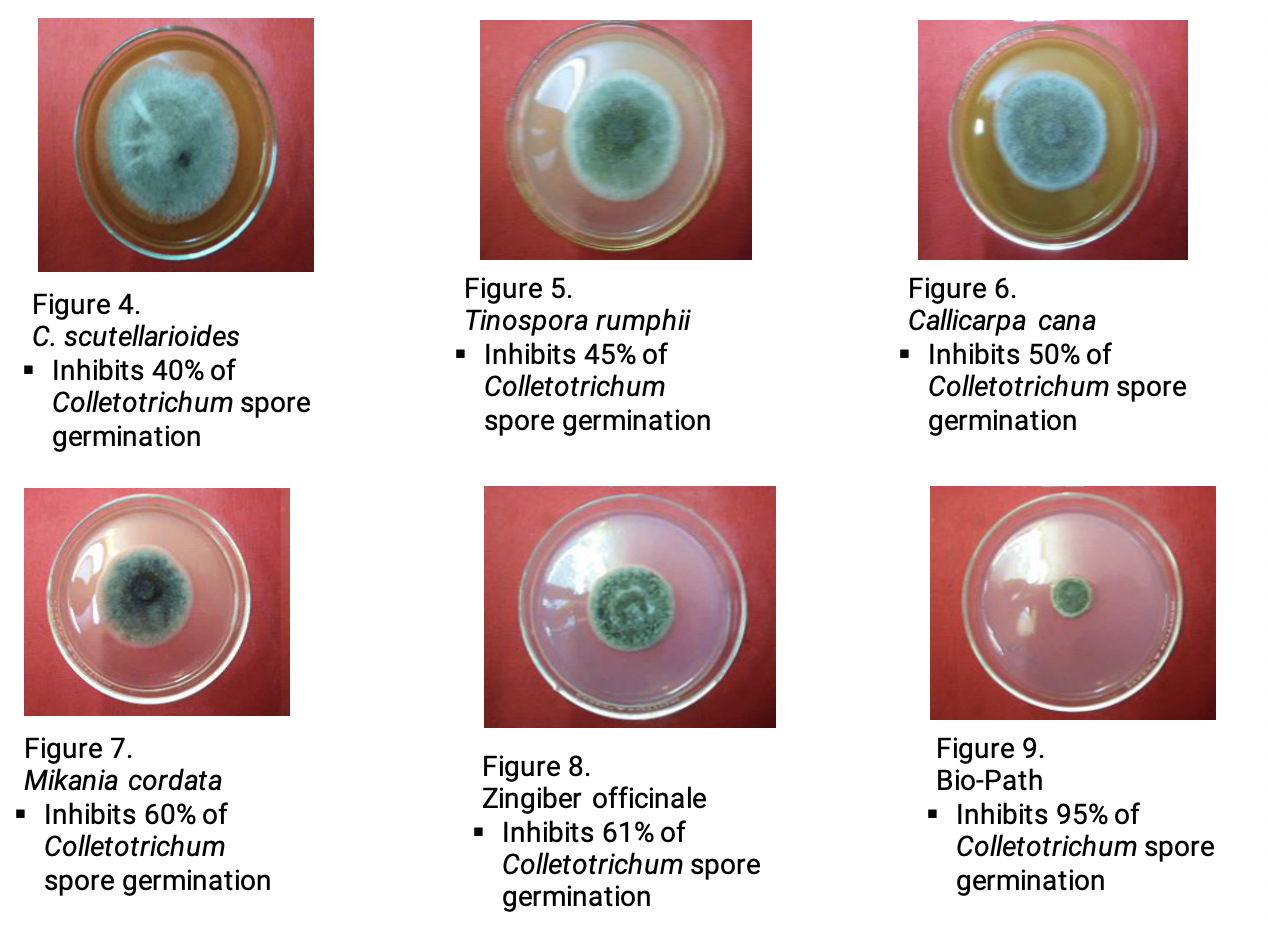
3. Use of Wood Vinegar
Wood vinegar is a liquid generated from the gas and combustion of fresh wood burning in airless conditions.
Effective wood vinegar plant sources found to affect the development of Colletotrichum sp at 7% (fig.10) and 10%(fig.11) concentration were:
• Tigbaw, Callicarpa cana
• Bamboo, Bambusa vulgaris

- Details
- Written by Visayas State University
-
Published: 17 February 2020
Student Enrolment Guidelines
All incoming students must pass the VSU College Admission Test (CAT) to qualify for enrollment. Each academic program observes a specific quota for admitted students. The university reserves the right to accept or decline applicants based on their qualifications and the requirements of their chosen degree program.
Once admitted, qualified new students may proceed with enrollment according to the schedule released by the Registrar’s Office. The enrollment schedule for the new #ProudViscans for the VSU Main Campus is scheduled on June 23 to July 4, 2025 at the Center for Continuing Education (CCE) Building located in the VSU Lower Campus.
If all requirements are complete, including the basic medical tests, new students can typically finish the enrollment process in less than a day.
Enrolment Requirements
For incoming first year students:
- Original Form 138/ALS-A&E Certificate or Rating
- Original Certificate of Good Moral Character
- Original PSA/NSO Birth Certificate
- Four (4) passport-size ID photos, colored, with a white background (without name and signature)
- Medical Certificate from the University and Health Services (UHS)
For Second-Degree Coursers:
- Transcript of Records (TOR) with Certificate of Transfer Credential or Honorable Dismissal
- Original Certificate of Good Moral Character
- Original PSA/NSO Birth Certificate
- Four (4) passport-size ID photos, colored, with a white background (without name and signature)
- Medical Certificate from the University and Health Services (UHS)
For Transferees:
- Transcript of Records (TOR) with Certificate of Transfer Credential or Honorable Dismissal
- Original Certificate of Good Moral Character
- Original PSA/NSO Birth Certificate
- Four (4) passport-size ID photos, colored, with a white background (without name and signature)
- Medical Certificate from the University and Health Services (UHS)
Since the previous academic year 2024-2025, VSU has implemented a one-stop-shop enrollment system to make transactions faster and more convenient for incoming Viscans.
Through this streamlined process, all key enrollment activities, including submission of credentials, dormitory application, subject encoding, ID photo, registration with the student body organization, and completion of customer feedback forms are conducted in one venue in the CCE Building.
For submission of credentials inquiries, please contact the Admissions Office at This email address is being protected from spambots. You need JavaScript enabled to view it. or call (053) 565 0600 local 1007.
For dormitory application inquiries, please contact the Office of the Vice President for Student Affairs and Services: This email address is being protected from spambots. You need JavaScript enabled to view it. or call (053) 565 0600 local 1064.
For subject encoding and ID photo, please contact: Office of the University Registrar: This email address is being protected from spambots. You need JavaScript enabled to view it. or call (053) 565 0600 local 1010.
For more inquiries, please contact the following:
Office of the Vice President for Academic Affairs: This email address is being protected from spambots. You need JavaScript enabled to view it. or call (053) 565 0600 local 1003.
Office of the Vice President for Student Affairs and Services: This email address is being protected from spambots. You need JavaScript enabled to view it. or call (053) 565 0600 local 1064.
Admissions Office at This email address is being protected from spambots. You need JavaScript enabled to view it. or call (053) 565 0600 local 1007.
Office of the University Registrar: This email address is being protected from spambots. You need JavaScript enabled to view it. or call (053) 565 0600 local 1010.
- Details
- Written by Visayas State University
-
Published: 14 January 2020
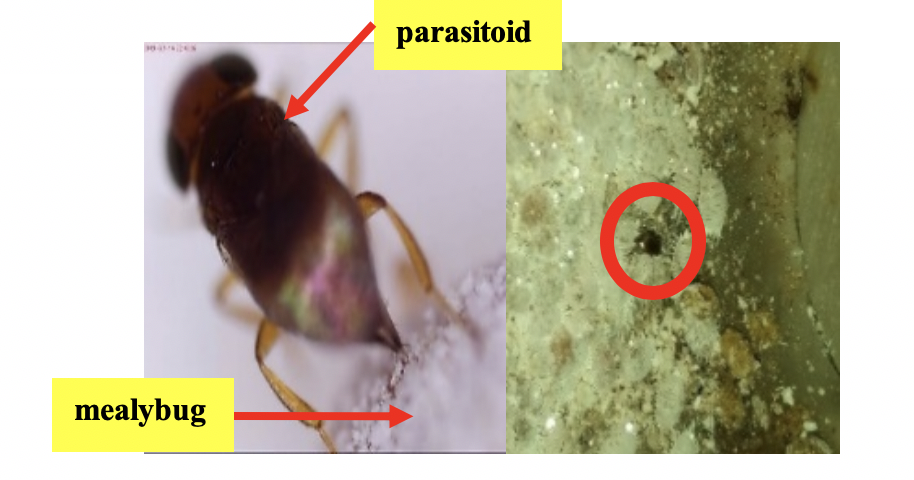
Figure 1. H. pseudococcina parasitizing on adult PPMB
1. Parasitoids
Encyrtid Parasitoid, Hambletonia pseudococcina (Compere)
Order: Hymenoptera
Family: Encyrtidae
Description: A very small parasitoid with clubbed-like antennae that can be parasitized up to 8 adult PPMBs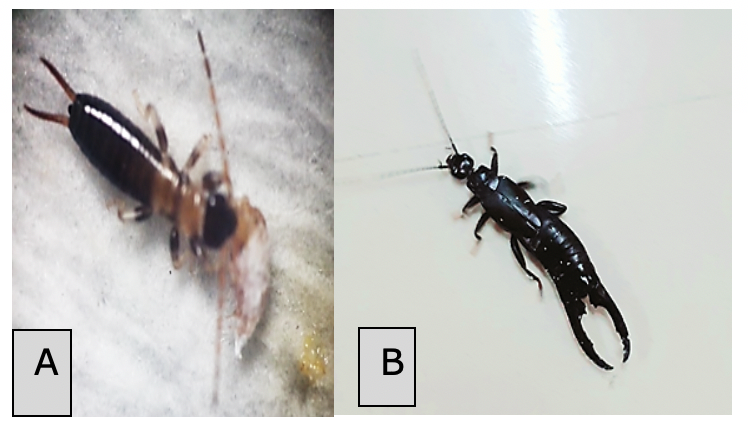
Figure 2. A) Nymphal and (B) adult stages of predatory earwig
2. Predators
- Predatory black earwig, Chelisoches morio
Order: Dermaptera
Family: Chelisochidae
Description: Has four nymphal instars that can reach up to 120 days prior from hatching to mortality and can consume 1-2 adult PPMB and up to 100 individuals of PPMB crawlers per day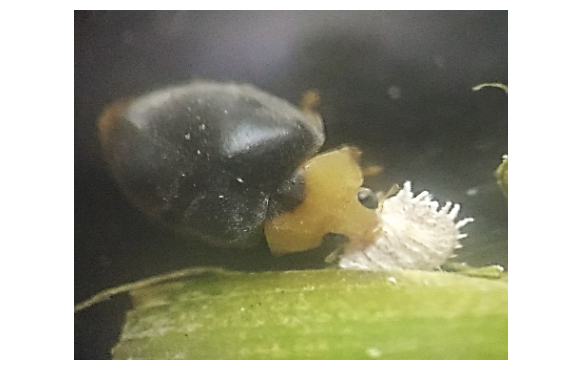
Figure 3. Cryptolaemus montrouzieri feeding on adult PPMB
- Predatory coccinellid beetle, Cryptolaemus montrouzieri
Order: Coleoptera
Family: Coccinellidae
Description: A voracious predator with a long history in biological control against mealybugs that could potentially consume up to 20 individuals of PPMB crawlers and 1 PPMB adult per day.
3. Entomopathogenic Fungi (EPF)
EPFs are microorganisms that specifically infect and often kills insects and other arthropods. EPFs are eco-friendly and good substitute for chemicals
Three (3) isolates of EPFs against PPMB:
• Metarrhizium anisopliae (fig.4)
• Lecanicillum lecanii (fig.5)
• Beauveria bassiana (fig.6)
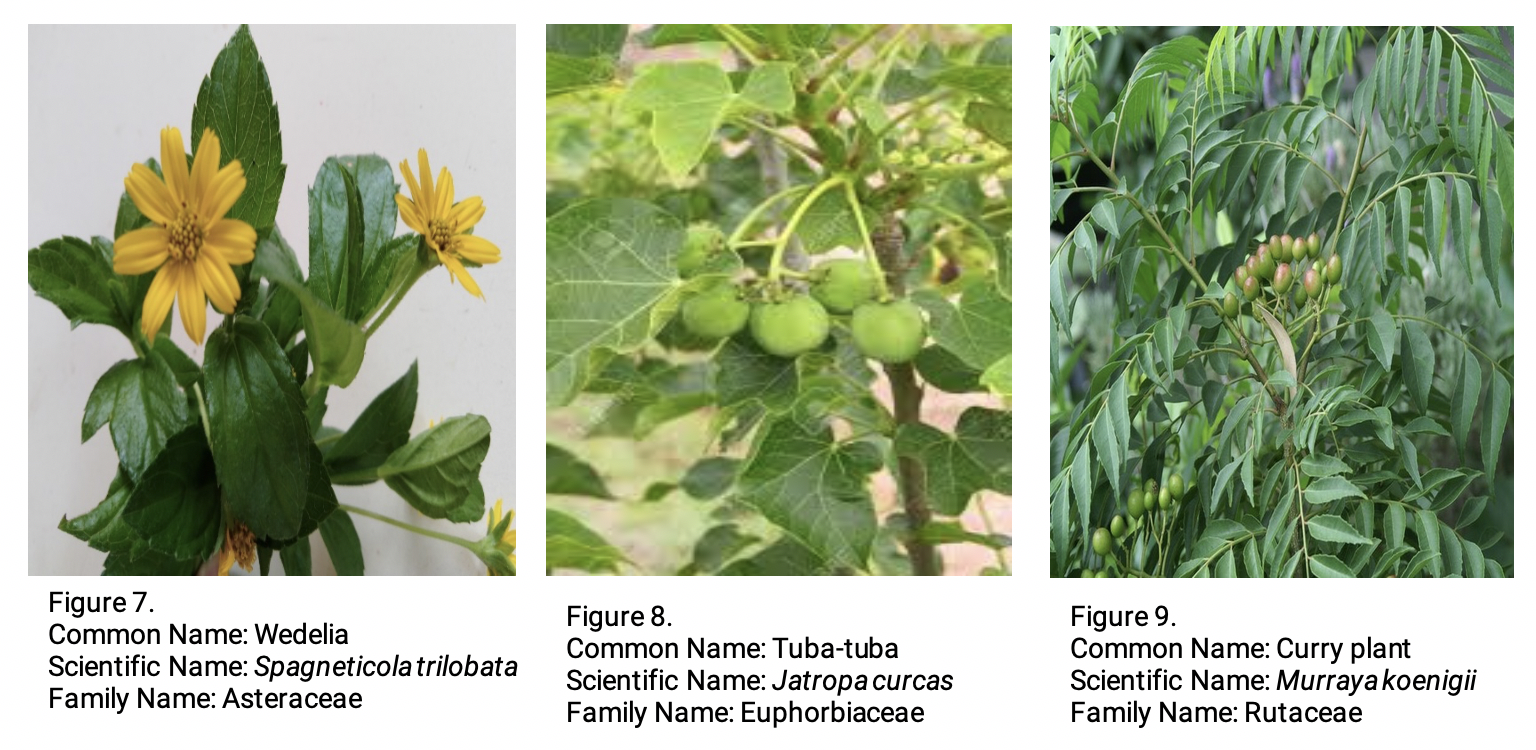
4. Botanical Insecticides
Botanical insecticides are naturally occurring chemicals extracted from plants or minerals to control or minimize insect pest population.
Botanical insecticides against PPMB includes:
• Jatropa curcas (fig.13)
• Murraya koenigii (fig.14)
• Spagneticola trilobata (fig.15)


